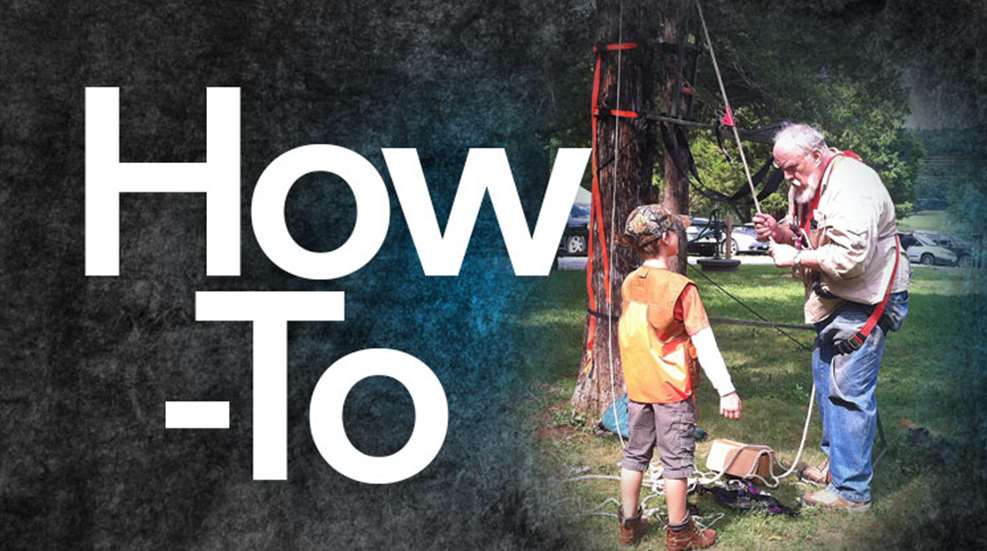
Three years ago on my first turkey hunt in upstate New York—well, technically it was the second hunt in the same week—I sat on the edge of a field with my 20-gauge across my legs. Sitting in a pop-up blind waiting for a gobbler to grace the field, I had no idea what the yardage of the field I was hunting was. The field was large, and that’s about as far as I got in regards to distance. Lucky for me, my hunting buddy hooked me up with some sticks and I was blessed with legs. Pacing out the yardage with the oversight of someone more knowledgeable than myself, I marked out 10, 20 and 30 yards with sticks equidistant on the 180 degrees that I could see from my blind. When a jake traipsed into the field and I missed, it wasn’t due to me not knowing my yardage—it was because I was a poor, nervous shot.
Not everyone can afford a rangefinder. Even if you have one, there’s a chance that a deer might sneak up on you and you’ll have to judge by instinct unless you want to risk spooking the animal. Veteran hunters will tell you that practice and experience are the tried-and-true solution for finding your yardage, but there are other options. Here are six of them:
1.) Use Sticks
You can do what I did, and—depending on what you’re hunting and where—measure the yardage with your own steps, placing sticks in the ground as far as you need to. Remember to put them in any shooting lane you anticipate an animal walking through, because if you simply place one or two sticks straight in front of you, but a deer walks out to your left, you may not be able to call it.
2.) Use Landmarks
If you plan to hunt the same location many times, you can start by using some type of indicator or even ranging when you’re scouting and deciphering which landmarks are at the distance you’re comfortable shooting your bow or rifle. This is a good option for those of you who would like to develop the skill of “educated guessing.” The more you range landmarks, the more you will start to remember and recognize other yardages in the future.
3.) Play Golf
I’m guessing that if you can’t afford a rangefinder, you’re probably not playing a few rounds of golf at the country club. However, even going to a driving range can help perfect your ability to guesstimate distances. According to this source, “Distance control is something the pros have down to an art, but something few amateurs get overly concerned about until they’re over the ball on the course.” Lucky for me, they have some helpful hints on how to perfect judging your distance that can help any hunter, too...if you feel like playing golf, that is.
If you aren’t a golf fan, another great option for perfecting your ability to judge yardage is to shoot 3D targets. Walkable 3D target ranges are great because not only do they let you know exactly what distance you’re shooting from with markers (usually), but it’s just great fun. If you don’t have a range near you, you can pick up your own target at any chain store or online and get familiar with shooting at different distances. I recommend practicing from whichever hunting setup you plan on using in the field, be it a pop-up blind, treestand or stalking. This is where practice makes perfect.
5.) Use a Key Wick
If you’re not comfortable with the practice-makes-perfect route, and you’re a more visual person, then I’ve got a great option for you. Many people say they would never stomp all over their hunting spot and trail their scent behind them—I don’t blame these folks—but if you need that visual marker to feel comfortable making your shot then you should try Key Wicks by Wildlife Research Center. These white pieces of cloth can be dipped in whatever scent tickles your nose hairs and tied to a tree or shrub. That way, you help eliminate your scent while giving yourself something to indicate a safe shot.
6.) Buy a Scope With a Rangefinder
Have some extra money in the bank? Can’t judge distances for the life of you? Then just give in and splurge on a scope with a rangefinder.
These are just some of the ways you can judge distances. If you have another option that works for you, share in the comments!







































